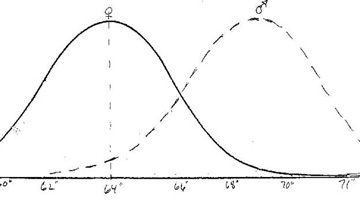|
| |
|
| |
|
|







|
|
TCHS 4O 2000 [4o's nonsense] alvinny [2] - csq - edchong jenming - joseph - law meepok - mingqi - pea pengkian [2] - qwergopot - woof xinghao - zhengyu HCJC 01S60 [understated sixzero] andy - edwin - jack jiaqi - peter - rex serena SAF 21SA khenghui - jiaming - jinrui [2] ritchie - vicknesh - zhenhao Others Lwei [2] - shaowei - website links - Alien Loves Predator BloggerSG Cute Overload! Cyanide and Happiness Daily Bunny Hamleto Hattrick Magic: The Gathering The Onion The Order of the Stick Perry Bible Fellowship PvP Online Soccernet Sluggy Freelance The Students' Sketchpad Talk Rock Talking Cock.com Tom the Dancing Bug Wikipedia Wulffmorgenthaler |
|
bert's blog v1.21 Powered by glolg Programmed with Perl 5.6.1 on Apache/1.3.27 (Red Hat Linux) best viewed at 1024 x 768 resolution on Internet Explorer 6.0+ or Mozilla Firefox 1.5+ entry views: 2787 today's page views: 496 (17 mobile) all-time page views: 3386537 most viewed entry: 18739 views most commented entry: 14 comments number of entries: 1226 page created Fri Jun 20, 2025 11:23:42 |
|
- tagcloud - academics [70] art [8] changelog [49] current events [36] cute stuff [12] gaming [11] music [8] outings [16] philosophy [10] poetry [4] programming [15] rants [5] reviews [8] sport [37] travel [19] work [3] miscellaneous [75] |
|
- category tags - academics art changelog current events cute stuff gaming miscellaneous music outings philosophy poetry programming rants reviews sport travel work tags in total: 386 |

| ||
|
- academics - - while I have been asked for directions (generally not my strong suit, except in familiar places) often enough, this is the first time an SBS bus captain has requested a translation (and as it turns out, they may not have one) Well, here comes the biannual Results ReportTM. Pulled a hambarassing B in my Pattern Recognition module, the first in my grad career. If I had to give an excuse, it would be the closed-book exams, and the fact that it was my first electrical engineering course.  Me, after seeing the B Got an A+ in Distributed Systems, which only reinforces, yet again, the sad disconnect between effort and outcomes.  If even Dogbert's getting into it... (Source: dilbert.com) Despite the less than stellar grade for the module, I will give an extremely short CliffsNotes overview of pattern recognition as I understand it. Also, inspired by jq's recent forum letter to the Straits Times (see a response), it will blend with, and transform into, a discussion of Friday's edition of that venerable paper. Ready? Go! Pattern Recognition I said a little about it back in 2009, and touched on very briefly in several other posts, but we'll start right from the beginning again. The objection of pattern recognition is to, given a set of entities, and some features or attribute data for each entity, classify the entities into "correct" groups. Example: We have a list of human adults, and for each person we have the result of a DNA test: 0 for an XX chromosome, 1 for XY, and 2 otherwise. If we desire to use this information to predict the gender of the person, the rule of predicting "female" for 0 and "male" for 1 would likely produce an extremely high successful recognition rate (but this may not be politically correct). Now, let's say that the people who collected the data couldn't quite afford DNA testing, but did have a measuring tape, and instead supplied the height of each person. We know that guys are usually slightly taller than gals, whether or not that is feministically proper. Say that we are paid a fixed sum for each correct prediction. Then, we could very well come up with a simple rule such as predicting "female" for a height of 1.67m and below, and "male" for a height of 1.68m and above.  (Source: drmillslmu.com) There are two main observations here. Firstly, why 1.67m? Well, this is just an example - there are mathematical techniques to find the optimal cutoff, given the (well-founded) assumption that height is normally-distributed (fair warning: this may not be true for other features!). The module spent some time on the process of calculating these numbers. It was not my favourite part of the module. The second observation is that the best possible recognition rate is limited by the given data. Pattern recognition is not magic. There is no possible technique that classifies people according their gender perfectly, using only their heights. This is a fundamental theoretical limitation, and one that is unlikely ever to be broken. "But wait!" a shrewd student might say. "If the heights are unique (perhaps measured to many decimal places), then wouldn't a perfect strategy to differentiate genders exist? It would simply choose the right gender for each person." That is technically true, but practically of no use. We could, of course, given the gender for each person, construct such a "perfect" rule for all the people we know about. However, it would be near useless in trying to predict the gender of a new, unknown person. Back to the normal distribution. It is easily understood that, if all we know about an entity is a single feature, and we know the exact distribution (normal or not) of that feature for each class, we can mathematically come up with the optimal classification rule. Problem solved. Case closed. So why is this still an area of research? First off, for most cases in reality, we never quite know the distribution. What is usually done is to collect some data, and then attempt to decipher the distribution from the data. This process is not error free, and in any case the normal distribution is often assumed, and the data wrenched (ok, just bent a bit) to fit one. Why? Researchers are honest as a whole, and often admit it is because the normal distribution is tractable - it can be easily manipulated mathematically. But, in the famous words of Lippmann, "Everybody believes in the exponential law of errors: the experimenters, because they think it can be proved by mathematics; and the mathematicians, because they believe it has been established by observation". Leaving the normal distribution for now, there is a second big problem. Often, more than one feature is available, and helpful. Returning to the gender classification example, let us say that instead of only height, we have other information about the subjects, such as the:
If we only knew that a person was 1.8m tall, we could only reasonably guess that the person was male. With the additional information that the person was wearing a skirt, however, we are justified in switching our guess. For the skirts attribute, we could easily code it in mathematical terms, as with DNA, i.e. 0 = no skirt, and 1 = skirt. This is tougher for attributes like names, however. The name John strongly suggests a male, and Jane a female, but it is much harder to express this fact, with thousands of possible names. We could handle this by splitting this natural attribute up into many binary attributes (i.e. isNameJohn/isNameJane), only one in the set of which will be true. This however raises another big problem - the curse of dimensionality. To give a very basic intuition of the curse, imagine that each person is represented by only two binary features, and there is a population of 10000 people. There are then only four possible combinations of features, and on average about 2500 samples per combination, which should give a good idea of what each combination means. However, imagine that there are now 100 binary features. There would then be over 1030 combinations, and the vast majority of combinations will have no representative; in a way, then, we can be said to know nothing about them. This can be mitigated by making certain assumptions, again assuming that the assumptions are right. Skirts and names are pretty strong predictors. However, what about something like a person's favourite colour? As can be seen, the genders differ - somewhat - in colour preferences. Can this information almost definitively pin down the gender, as with a name? Of course not. But can it help? Very probably. And there is the last sort of feature, the handphone number of a person. I doubt that it has anything to do with the gender, and this information is therefore useless noise. In fact, it is probably worse than useless, since valuable computational resources will have to be taken up to consider it! Is knowledge always good? Not necessarily, it seems, as there may be a cost associated with utilizing it. The Benefit Of Belief This applies in a more everyday sense too. Take the Power Balance bracelet, whose manufacturer recently admitted that the wrist-sized hologram-embedded chunk of silicon had no scientific basis for its claims [Page C9]. Well, I'll be - who would have guessed that strapping a glorified rubber band on, wouldn't stimulate increased speed and strength? But wait, it probably does, at least part of the time; It likely has worked for some of its users, though it's hard to tell whether this occurs more than the variation due to pure chance. However, the effectiveness of placebos is well-recorded in psychology and medicine. The key, however, is that for the effect to kick in, a person has to sincerely believe in it. Pretending doesn't do the trick ("I see no logical reason why having a rubber band around my ankle would help me run faster, but I would sure like to pass the IPPT, so I'll try very hard to think it's true!"). If the placebo effect can bring results beyond that of reasonable maximal conscious effort, deluded belief in a falsehood may actually be practically beneficial. This may help explain the pervasiveness of religions; it may be true that a stranded hiker A would not have managed to survive without food or water for a week in the wilderness without his belief in god A. However, when hiker B, a devout follower of god B, pulls off the same feat for ten days, can we then hypothesize that god B is greater than god A, or that these gods are, in some fundamental way, equivalent? Thus, it seems that the specific form of belief has little bearing on the effectiveness, just that the belief has to be truly held. A world-renowned specialist recommending a placebo treatment as a last resort might get a better result than an acquaintance, just as the pronouncements of a respected priest or curses of an established witch-doctor are taken more seriously than those of a passing stranger. There may be a price to pay for rationalism, and truth in being too "smart" for one's own good, after all. Justice of the Price A few days after the Chief Justice urged criminal lawyers (an unfortunate title) to be ethical (without implying anything at all, of course), he has broached the revolutionary concept of having criminals pay compensation directly to their victims, who might otherwise get nothing (other than a sense of moral victory) because they were too poor to sue for damages [Page A1]. The strange thing is that the courts have never been reluctant to order hefty fines, which appear to go to the authorities. While this may be fair - a crime that constitutes an act against the social order should entitle the guardians of said order to extract compensation - it seems that the brunt of the harm is usually visited on the victim in particular rather than society in general, so why don't they automatically get a piece of the action? It was also emphasized that compensation was not supposed to allow the convicted to buy their way out of paying the penalty for a crime, as previously stated on this blog, sentences which impose a fine, then insist on imprisonment if the fine is not paid, reduces the crime to a matter of affordability. Effectively, it's the same as a jail sentence with a buy-out clause; which is not all bad, however, given that keeping someone in the lock costs serious money. In Lessig's Free Culture (borrowed from the library, but fittingly available free as a PDF download), the case of an undergraduate named Jesse Jordan is mentioned. Jordan wrote (or rather, adapted) a simple search engine for his college's network, which just so happened to be used to share music files. Jordan had nothing to do with the files, which in any case made up only a quarter of the available content on the network. Long story short, the Recording Industry Association of America (RIAA) sued him for fifteen million dollars. One might wonder at the point of shaking down an average undergrad for a million bucks, let alone fifteen. Why not just go full retard and ask for a hundred billion instead? As a matter of fact, the RIAA did just that, with three other students. As far as I know, none of them were Bill Gates. Alright, alright, the dollar figure was to all intents and purposes a joke. Less funny is the legal situation which Jordan found himself in. He could contest the lawsuit, and very possibly win - but it would cost north of a quarter million dollars, which he wouldn't be able to claim back even if he won. The alternative was to admit guilt and settle, giving up his life savings of US$12,000. Deciding that certain family bankruptcy was not worth the pursuit of justice, he settled. As can be seen, this is not a knock on Singapore's judicial system, but rather on how the law works. Doubtless there are many Jordans, caught in many different situations, who don't even get the consolation of a book chapter. The law may be an ass, but it's the best we have. Huh [Page A16] is devoted to a Facebook campaign by some NUS students for eating-alone-awareness. I can only repeat, huh? I have seriously never even contemplated that people could get shy about eating alone in the canteen, but there it is, on a Facebook page, no less! From the Straits Times poll on local university students, about 36% eat alone at most once or twice a week, with only 2% in NUS eating by themselves all the time. I would have fallen between these two groups in my undergraduate days, with just about my only dining-together experiences being rare invitations from my 4O buddies, packed schedules (and three-day weeks) permitting. Oh, and rush hours, in which case want to eat alone also cannot due to lack of seating. The number one method for dealing with eating alone was buying takeaway just to avoid eating alone. Wow. Just when I thought I had gotten a somewhat tenuous handle on human psychology, something comes up that makes me despair of ever understanding people. I mean, being shy about public advocacy is one thing, but eating... Executing Ideas [Page C6] reported on inQbox, which has an innovative concept allowing entrepreneurs to display their goods in locker-sized spaces at popular retail malls for a few hundred dollars a month. It appears that they have closed all their outlets after some seven years in operation, unfortunately, and are now being hounded by tenants demanding their payments back. To put the fee into perspective, the tiny yellow boxes in front of shopfronts in neighbourhood markets go for about S$2000 a month, with half a storefront's rental being over S$3000, or so a tailor whom I recently had cause to visit said. This means that stallholders/half-a-store holders have to make seventy to a hundred bucks in daily profit, not revenue, to simply break even; I suppose they do manage, at least those that stick around. Therefore, I would say that the idea has its merits - a year or so ago, a bunch of local blogshop entrepreneurs got together and shared space in a bricks-and-mortar shop in Far East Plaza, which I would say is pretty much the same thing, perhaps with a more unified theme. Inspecting the business model, it appears that the owners of inQbox are in much the same boat as mall management - assuming that they divide their store volume into X equal display boxes (for simplicity's sake) and offer each of them at a monthly rent of r, they will be guaranteed to be profitable if they get a takeup T <= X such that Tr - R > 0, where R is their own monthly rent, without bothering whether their box-tenants turn a profit (some businesses with a similar concept do charge commissions - and one of them appears to use the same webhost as this blog). The box-tenants probably won't continue if they don't earn, however, and the box providers would be in trouble if they can't find some combination of T and r that will cover their costs. Was that what happened in reality? The point here is that executing an idea is often as important, if not more important, than the idea itself. For instance, the One.99 Shop didn't survive, despite basically being Daiso (not that the concept itself is new - dollar stores date from the 19th century, and I believe there's at least one in my neighbourhood market). More pointedly, this happens in academic settings too. It is not uncommon that several research groups discover similar ideas and publish them at about the same time, and in such cases, one of the papers tends to get cited far more than the others. This might be put down to execution - a little more data, a catchier title - or what can only be said to be sheer chance, like having a last name starting with A, and getting increasingly re-cited from appearing in survey papers. Maybe they could have tried to value-add by positioning hamsters in the display case. I am assured by Mr. Robo that he makes a great sales assistant.  I'll even throw in the sunflower seeds! Well, some of them, anyway Mr. Robo: "And in this box, we have a tableware supplier. Beautiful metallic dish, simply beautiful. Great addition to any table. Matches the sandy tones perfectly. If not, perhaps you might consider the nondescript white container. No? Ok, let's cut to the chase, buster. I'm cute. Buy it." [Following up on other ventures, it appears that local highest unique bid auction site Tatarah.com.sg, which I discussed in 2008, has disappeared, while the speaker at my graduation ceremony in 2009 has run into some difficulties too. Entrepreneurship's all fun and dandy, till the bills come home.] Next: Fuchen Genius
Trackback by Parenting Book
Trackback by ability emotional intelligence
Trackback by signs of a person lying
Trackback by just click the up coming document
Trackback by Time Management Books Pdf Download
|
||||||||||||||||||
 Copyright © 2006-2025 GLYS. All Rights Reserved. |
||||||||||||||||||